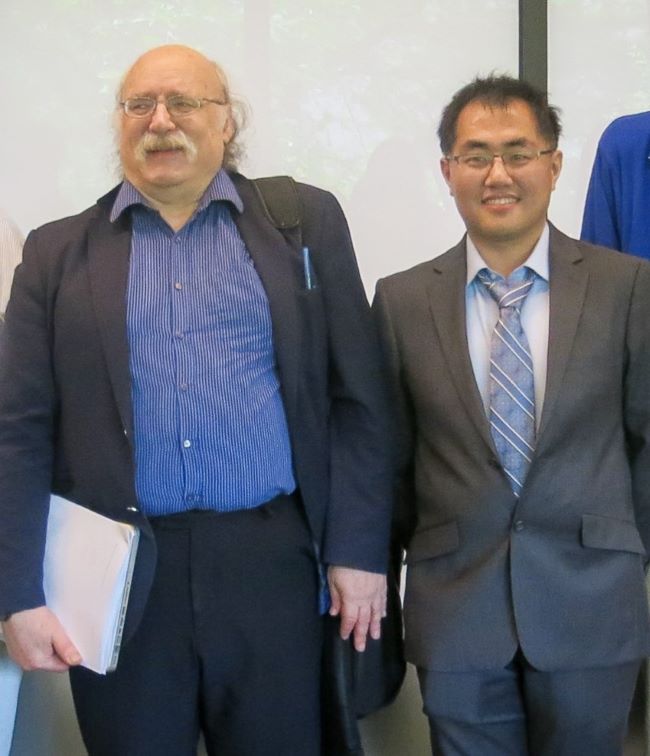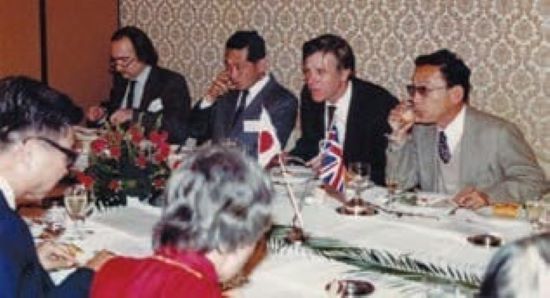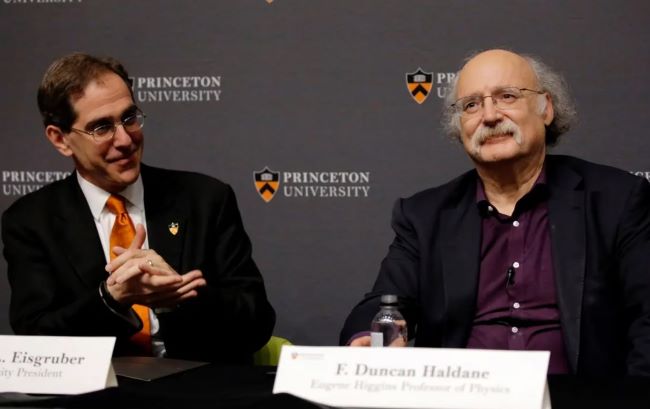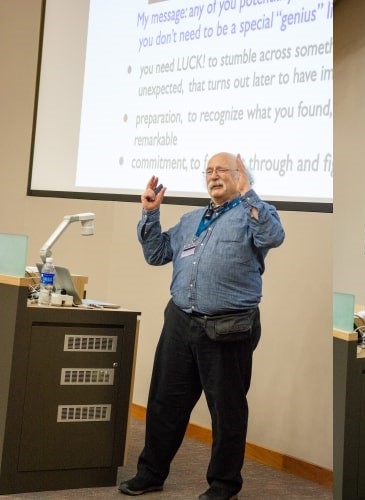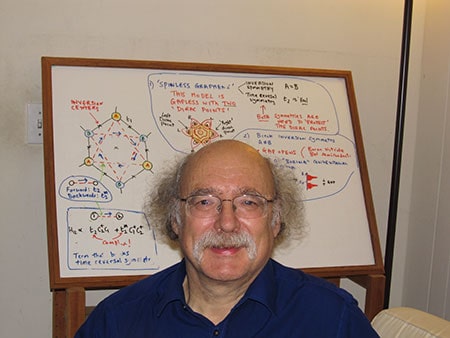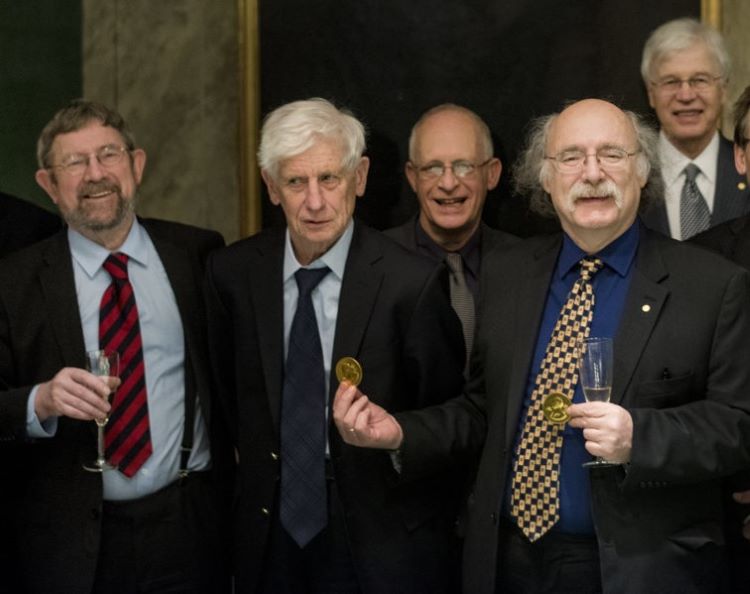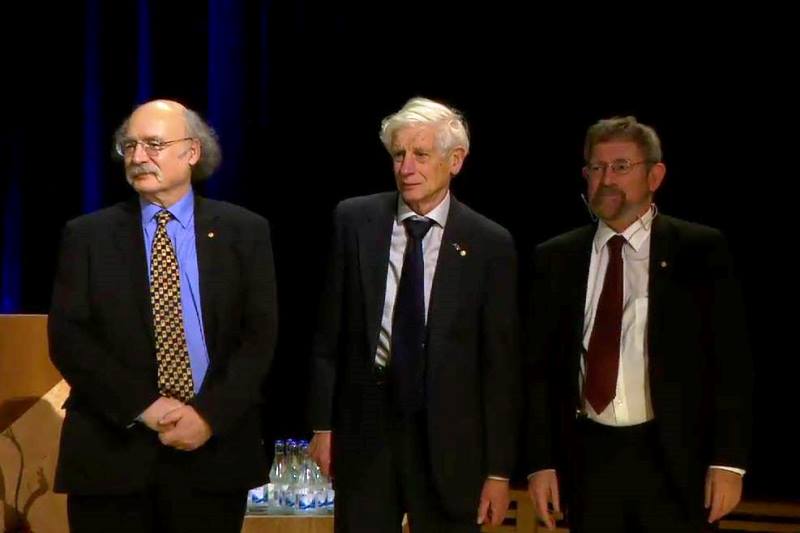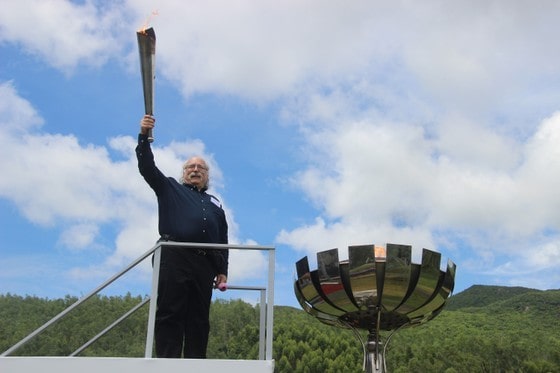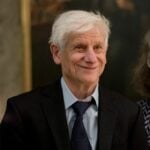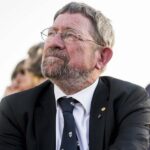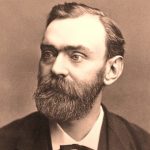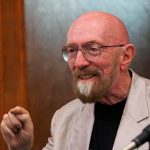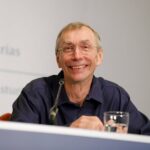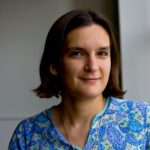Duncan Haldane Age, Wife, Children, Family, Biography
Quick Info→
Wife: Odile Belmont
Age: 72 Years
Hometown: Princeton, New Jersey
| Bio/Wiki | |
|---|---|
| Full Name | Frederick Duncan Michael Haldane |
| Other Name | F. Duncan Haldane |
| Profession(s) | Theoretical Physicist, Academician |
| Famous Role | Receiving the Nobel Peace Prize for Physics in 2016 |
| Physical Stats | |
| Height (approx.) | 5' 8" (173 cm) |
| Eye Colour | Light Brown |
| Hair Colour | Salt and Pepper (semi bald) |
| Physicist | |
| Field | Condensed matter theory |
| Doctoral Advisor | Philip Warren Anderson |
| Doctoral Student | Ashvin Vishwanath |
| Doctoral Thesis | An extension of the Anderson model as a model for mixed valence rare earth materials (1978) |
| Academic Awards, Honours | • 1992: Honourary Fellow of the American Academy of Arts and Sciences in Boston • 1993: Oliver E. Buckley Prize of the American Physical Society • 1996: Honourary Fellow of the Institute of Physics in the UK • 2008: Lorentz Chair Award • 2012: Dirac Medal • 2015: Received Doctor Honoris Causae of the Université de Cergy-Pontoise • 2016: Nobel Prize in Physics (with D. J. Thouless and J. Michael Kosterlitz) 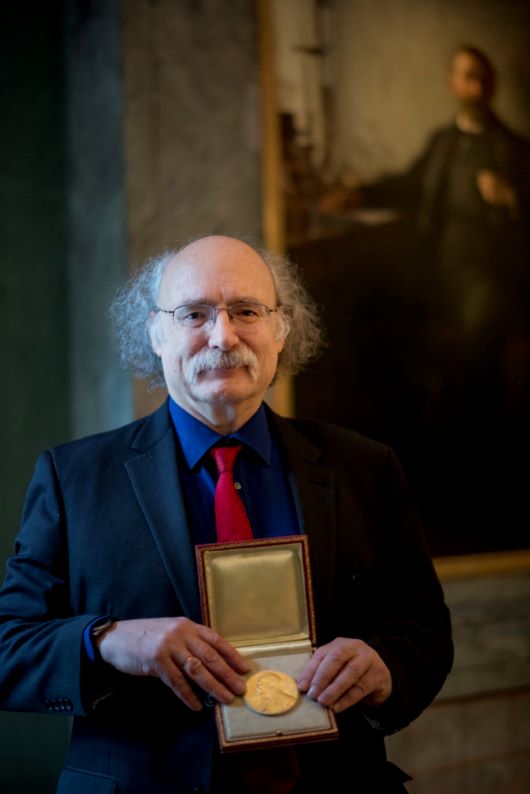 • 2017: Lise Meitner Distinguished Lecture and Medal • 2017: Golden Plate Award of the American Academy of Achievement |
| Personal Life | |
| Date of Birth | 14 September 1951 (Friday) |
| Age (as of 2023) | 72 Years |
| Birthplace | London, England |
| Zodiac sign | Virgo |
| Nationality | • British • Slovenian (received on 22 March 2019) |
| Hometown | Princeton, New Jersey, USA |
| School | St Paul's School, London |
| College/University | Christ's College, Cambridge University |
| Educational Qualification(s) | • Bachelor of Arts (1973) • PhD in Physics (1978) |
| Relationships & More | |
| Marital Status | Married |
| Affairs/Girlfriends | Odile Belmont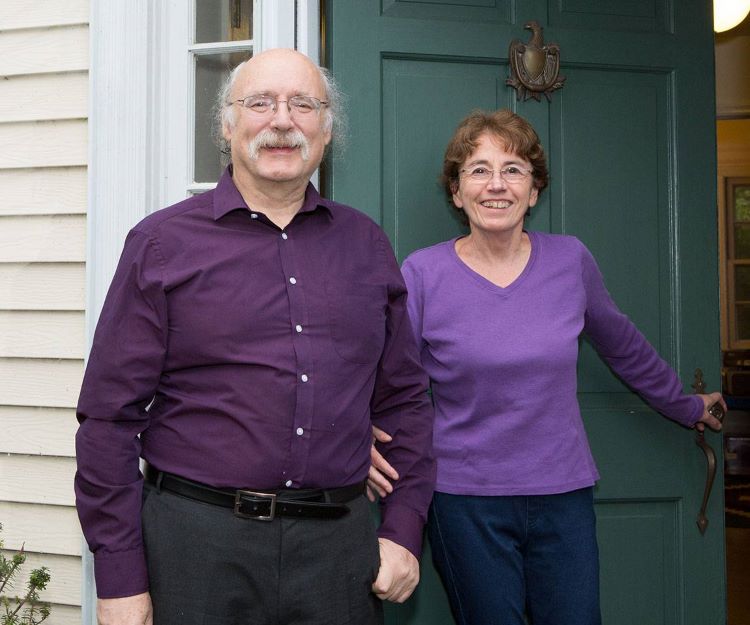 |
| Family | |
| Wife/Spouse | Odile Belmont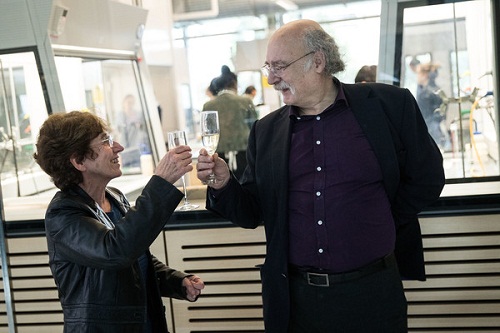 |
| Children | Son- 1 (elder) Daughter- 1 (younger) |
| Parents | Father- Frederick Paterson Haldane (24 May 1912 - 15 September 1983) (reitred British Army doctor, psychologist)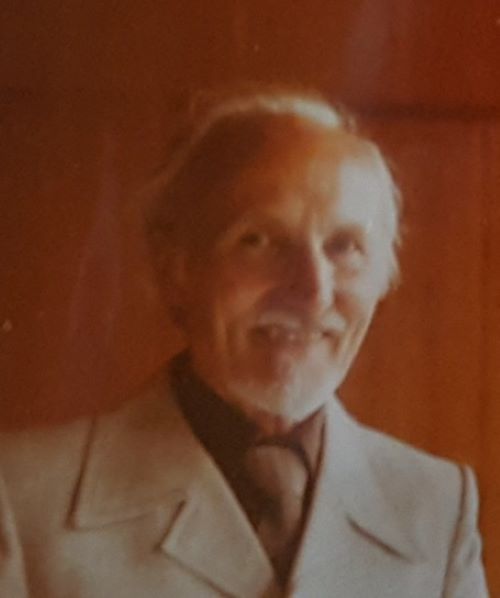 Mother- Ljudmila (Mila) Haldane (Renko) (24 December 1919 - August 2016) |
| Siblings | Brother- John Stuart Haldane (9 June 1957 - 21 August 2000) |
| Other Relatives | Grandfather- John Rodger Haldane (1882-1967) (sherriff)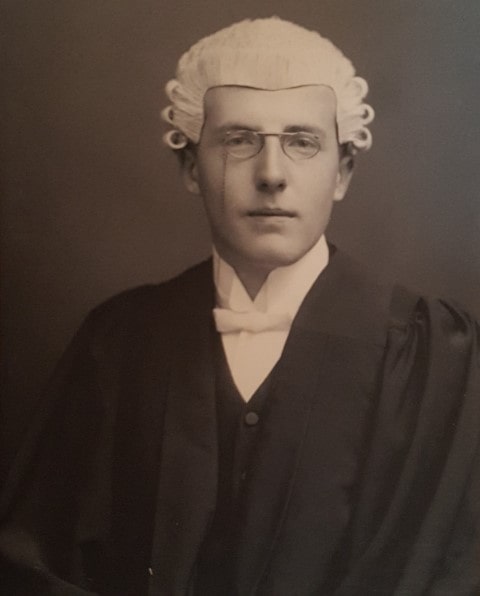 |
Some Lesser Known Facts About Duncan Haldane
- Duncan belongs to a family of medical professionals based in London; the family traces its roots back to Scotland.
- His father relocated to London from Scotland following his appointment as a psychiatrist at the National Health Service.
- Since his mother belonged to Austria, Duncan learnt German as a child. He wanted to learn Slovenian as well but could not do so.
- In an interview, he revealed that despite completing her medical studies in Austria, his mother could not practice medicine in the UK after she relocated from Austria following her marriage to Frederick as the British government did not acknowledge the Austrian degrees. He talked about it and said,
My mother met my father when he was an army doctor in the British Occupation Forces in Austria. She was a medical student working in a hospital when she met him, but never managed to complete her studies after coming to Britain, because all the exams she had passed in wartime Vienna would not have been recognized, and she would have had to restart all the medical training from scratch.”
- He did his early schooling at a local school situated in Bedford Park; he studied there till the age of 10.
- There, he developed a liking for arithmetic and spelling. He was often scolded by his teachers for poor handwriting.
- After he turned 10, he was enrolled at Colet Court, now known as St Paul’s Juniors, in London.
- There, his interest in mathematics and science developed. He took English, Latin, French, mathematics, physics with chemistry, physical geography, and elementary geology for his O-level examinations.
- In the last years of his school days, he selected geography over history due to his interest in studying the mineral composition of a rock. For his A-level examinations, he had maths and science without biology.
- Even though his family members were medical professionals, they never forced him to choose the profession. Therefore, he decided to leave studying biology at an early age and study physics instead.
- In the mid-sixties, Duncan Haldane developed a keen interest in the rock and roll genre of music. He also used to attend music concerts.
- After completing his school studies, Duncan took a nine-month-long break from his studies as he wished to travel to different parts of the European Union with his friends to explore other types of cultures.
- After completing his tour of the EU, Duncan took up a job at a publishing house to save some money before starting his higher education. He, however, left the job there to travel to Asia and visit countries like India, Nepal, and Iran.
- After returning to London, he enrolled at Christ College, where he studied mathematics and science. Since he was required to study biology, he decided to study cell biology.
- Duncan was initially interested in specialising in chemistry; however, after he accidentally swallowed a harmful substance while experimenting, he decided to specialise in theoretical physics. In an interview, he talked about it and said,
I found I was not so gifted in the laboratory, and after an experience when I accidentally swallowed some nasty chemical I was supposed to measure out a small dose of using a mouth pipette (I do not believe such things still exist with today’s work safety rules) I decided I should opt for prudence and focus on theory!”
- Haldane was taught advanced quantum mechanics by the Nobel Prize-winning American physicist Philip W. Anderson in the final year of his graduate studies. Anderson’s teaching method motivated Haldane to pursue PhD under his guidance.
- He then worked on the massless spinning relativistic strings, also known as the string theory, at a time when the theory had lost its popularity, and it took Haldane and other physicists more than a decade to “re-popularize” it.
- Philip and Duncan later created and worked in the TCM (Theory of Condensed Matter) group at the Cavendish lab in Cambridge. He compiled valence fluctuations with the Anderson model of magnetic impurities and the Anderson-Yuval-Hamann renormalization group theory.
- Duncan led the TCM group by himself as Anderson moved out of Cambridge University for some time.
- Once Anderson rejoined Cambridge, Haldane and he moved to New Jersey, USA, where they joined Princeton University to continue his studies.
- In the US, he started doing research work at the Murray Hills-based Bell Labs.
- Duncan Haldane was allotted a separate office and a research lab at Princeton University in September 1975. At Princeton, he worked on solving the Kondo model, which aimed at explaining the scattering of conduction electrons in a metal due to magnetic impurities.
- During his last year at Princeton University, he was offered the opportunity to pursue his post-doctoral studies at the Institut Laue-Langevin (ILL) in France. Philippe Nozières, a French condensed matter physicist, extended the offer to him while visiting Princeton University to give a seminar.
- Thereafter, Duncan went to Colorado, where he attended a month-long workshop on strongly correlated electron systems at the Aspen Center for Physics. There, he met many renowned physicists such as Lev Gorkov and Sasha Migdal.
- While living in the US, he purchased a Volkswagen Beetle, which he took to France as well.
- After arriving in France, he struggled to settle due to a language barrier. Despite studying French in school, he lost touch with it due to a lack of practice.
- Duncan met his wife Odile Belmont in France.
- In France, he met Hans Fogedby with whom he began working on solving the Wolff model using the bosonization technique as well as the Anderson-Yuval-Hamann treatment of the Kondo model.
- He was among the few physicists chosen to attend a multinational workshop at the Copenhagen-based Nordic Institute for Theoretical Physics, also known as NORDITA. There, he discussed in detail the Kosterlitz-Thouless treatment of the topological phase transition as well as the bosonization of a 1D quantum spin chain.
- In 1981, he proposed the Luttinger liquid theory, which went on to become one of the most used and cited theories in theoretical physics.
- Duncan received a job offer from the University of Southern California in Los Angeles shortly after proposing the theory. Although he initially did not want to move to Los Angeles, he ultimately decided to do so because of the job market situation in the UK at the time.
- Before relocating to the US, he was invited to Japan to participate in brainstorming sessions with Japanese and American physicists, including Kazumi Maki and John Hubbard.
- A year after relocating to the US, he penned a research paper on spin-chain and got it published. He also refereed numerous research papers and theses written by many well-known physicists.
- In late 1984, he visited France on an invitation to conduct a joint study with Rémi Jullien, Robert Botet, and Max Kolb on numerical studies to test the integerS antiferromagnetic spin chains equations.
- From 1984 to 1988, he became a research fellow at the Alfred P. Sloan Foundation, a non-profit organisation.
- While in France, he also learned to do physics calculations using the newly introduced Lanczos sparse-matrix diagonalization method.
- After he came back to Los Angeles, he was approached by Ed Rezayi, a physicist, to work jointly on fractional QHE’s numerical studies.
- In 1985, the Nokia Bell Labs offered him a job as a technical staff member. He did not resign from the University of Southern California, instead, Duncan Haldane took a leave of absence and joined Bell Labs in New Jersey.
- In early 1987, he decided to quit his job at the labs to return to the University of Southern California. He was offered a position as a researcher. There, he focused on research related to quantum magnetism and the fractional quantum Hall effect.
- Thereafter, he proposed the zero-field quantum Hall effect, now known as the quantum anomalous Hall effect or the Chern Insulator.
- After the proposal, he was invited by many quantum physics researchers to undertake joint research in the field of topological insulators.
- In 1988, he went to China, where he was invited to give a lecture to the students of physics at the Peking University (PKU) in Beijing.
- In the same year, the National Academy of Sciences invited him to join a team of physicists to go to the Union of Soviet Socialist Republics (USSR) to engage in a dialogue with their Russian counterparts. The group of which he was a part became the second group of foreigners to be allowed inside the Landau Institute at Chernogolovka.
- In 1990, Princeton University offered him a job, and he accepted. There, he joined the committee that was involved in the establishment of a condensed matter group.
- The following year, he penned a research article titled Fractional Exclusion Statistics.
- He took a six-month-long leave from the university in 1992.
- Thereafter, he visited France-based École Normale and gave a speech on the Haldane-Shastry model. This resulted in his collaboration with Vincent Pasquier and Denis Bernard, leading to the formation of the Yangian quantum group.
- In 1993, for his work in the field of old quantum spin chain work, Duncan received the Oliver Buckley Prize.
- He received the Fellowship of the Royal Society of London in 1996.
- The graphene-like toy model for the zero-field quantum Hall effect which he described in 1988, played a vital role in the research conducted by Ganesh Sundaram and Qian Niu in proving the equations of the anomalous Hall effect in ferromagnetic metals.
- The model also proved David Thouless’ TKNN topological findings. The Nobel committee also cited this finding as David Thouless’s pivotal contribution to topological matters.
- In 2004, he worked with his PhD student Srinivas Raghu to define topological photonics with the help of the 1988 model. This led to the creation of a new field in physics.
- In 2008, he proposed the theory of the entanglement spectrum of quantum states, which proved to be his groundbreaking invention in determining the topological features.
- He was awarded the International Centre for Theoretical Physics Dirac Medal in 2012 for the zero-field Hall effect model, which he introduced in 1988.
- Duncan Haldane occasionally consumes alcoholic beverages.
- He is an avid animal lover.
- Duncan did not acquire American citizenship. He, however, acquired a Permanent Residency (PR).
- Duncan Haldane has been a Foreign Associate of the US National Academy of Sciences. He has also been a member of the American Academy of Arts and Sciences, the U.S. National Academy of Sciences, and the American Physical Society. Furthermore, he has been a fellow of the American Association for the Advancement of Science.
- Duncan Haldane is a professor of physics at Princeton University, USA, and a Distinguished Visiting Research Chair at Perimeter Institute for Theoretical Physics, Canada.
- In October 2016, Duncan Haldane, David J. Thouless and Michael Kosterlitz were together awarded the Nobel Prize in physics for their research in theoretical discoveries of topological phase transitions and topological phases of matter. Duncan received one-fourth of the total prize money of $930,000.
- In 2022, he was invited by the Vietnamese government to participate in the first conference of the International Year of Basic Science for Sustainable Development titled Topological Quantum Electrons Interacting In-person.
- He has published many books on physics. Some of the most popular books are Quantum Hall Effect without Landau Levels: A Condensed-Matter Realization of the Parity Anomaly (1988), Entanglement Spectrum as a Generalization of Entanglement Entropy: Identification of Topological Order in Fractional Quantum Hall States (2008), and Geometric Description of the Fractional Quantum Hall Effect (2011).


